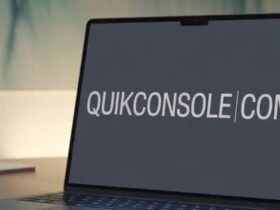Polyvinyl chloride (PVC) boards are essential in the electronics industry. They offer durability, electrical insulation, and cost-effectiveness. These qualities make them a top choice for various applications. This article covers the properties, benefits, and uses of PVC boards used in electronics. It explains why PVC boards are vital in modern technology.
What Are PVC Boards Used in Electronics?
PVC boards are rigid, lightweight, and chemically resistant plastic sheets. They are made from polyvinyl chloride. These boards are used in construction, signage, and electronics. They can be modified for better fire resistance, flexibility, and insulation. This makes them ideal for electrical applications.
Key Properties of PVC Boards
PVC boards possess several key characteristics that make them ideal for electronics applications:
Electrical Insulation
One major benefit of PVC boards in electronics is their excellent electrical insulation. They block electrical currents from passing through. This helps reduce the risk of short circuits and electrical hazards.
Fire Resistance
PVC boards have inherent flame-retardant properties, meaning they do not easily catch fire. Some are even enhanced with fire-retardant additives, making them safer for electronic components.
Chemical Resistance
Electronics often involve exposure to chemicals, solvents, and moisture. PVC boards resist chemical corrosion, ensuring durability and longevity in demanding environments.
Lightweight Yet Strong
PVC boards offer high strength-to-weight ratios, making them easy to handle and integrate into electronic devices without adding unnecessary bulk.
Cost-Effectiveness
Compared to other insulating materials, PVC boards are affordable while maintaining high performance. This makes them a popular choice for mass production in the electronics industry.
Applications of PVC Boards in Electronics
PVC boards are utilized in numerous electronic applications. Here are some of the main uses:
Printed Circuit Boards (PCBs)
PVC is used as an insulating layer in PCBs to provide electrical isolation between conductive pathways. Its durability and heat resistance make it a preferred choice in high-performance electronic circuits.
Cable Insulation and Wire Management
PVC boards help in cable routing and wire management, ensuring that wiring systems remain organized and free from interference. They also serve as protective cable conduits in industrial and household electrical systems.
Enclosures for Electronic Devices
Many electronic enclosures and casings are made from PVC boards. These enclosures provide shock resistance, heat protection, and chemical stability, safeguarding delicate components inside.
LED Display Panels
PVC boards are used in LED signboards and display panels due to their weather resistance and lightweight properties. They provide a stable foundation for mounting LED components.
Battery Insulation and Support Structures
PVC boards act as protective insulators in battery systems, preventing short circuits and improving overall battery performance.
Switchgear and Control Panels
PVC boards are used in switchgear panels, serving as insulating barriers to reduce electrical risks in industrial and commercial setups.

PVC vs. Other Insulating Materials in Electronics
When choosing materials for electronic applications, it’s essential to compare PVC boards with alternatives like fiberglass, acrylic, and polycarbonate.
PVC vs. Fiberglass
- PVC is more flexible and cost-effective than fiberglass.
- Fiberglass offers higher heat resistance but is more expensive and fragile.
PVC vs. Acrylic
- PVC has better impact resistance and is easier to machine.
- Acrylic provides higher transparency, making it more suitable for display applications.
PVC vs. Polycarbonate
- PVC is cheaper and more widely available.
- Polycarbonate has better impact resistance and UV stability, making it suitable for outdoor applications.
Environmental Considerations and Sustainability
PVC offers many benefits but also raises environmental concerns. Its production and disposal can impact the environment. However, recycling techniques are improving waste management. Many manufacturers now develop eco-friendly PVC formulations. These reduce harmful emissions and promote sustainability.
How to Choose the Right PVC Board for Electronics?
Selecting the right PVC board for your electronic application depends on several factors:
- Thickness: Choose the appropriate thickness based on your structural and insulation needs.
- Fire Rating: Opt for fire-retardant PVC boards for high-temperature applications.
- Chemical Resistance: Ensure compatibility with any chemicals your application may involve.
- Processing Compatibility: Make sure the PVC board is easy to cut, drill, or shape according to your design requirements.
Future Trends in PVC Boards for Electronics
The electronics industry continues to innovate, and PVC boards are evolving with it. Some upcoming trends include:
- Improved fire-resistant formulations to enhance safety.
- Eco-friendly PVC options to reduce environmental impact.
- Smart PVC boards integrated with conductive properties for advanced applications.
Conclusion
PVC Boards Used in Electronics are essential in modern technology. They offer insulation, durability, and cost-effectiveness. Their versatility makes them ideal for various applications. These include printed circuit boards, cable management, and enclosures. PVC boards provide reliable solutions for electronic needs. As technology advances, they will keep improving. This ensures their importance in the ever-changing electronics industry.






Leave a Reply